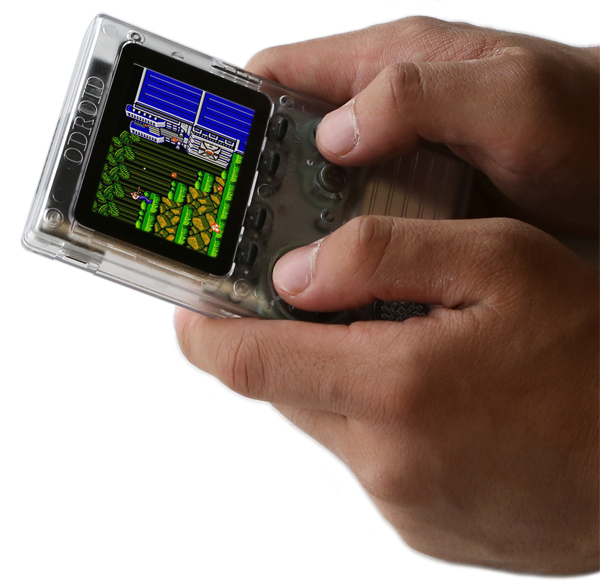To celebrate ODROID’s 10th anniversary, we present to you the ODROID-GO Game Kit! With a special anniversary board and with all the parts to put together your own game kit and see the workings behind such a device, it is not only a fun assembly project, it can be an educational tool to learn about all the hardware and software that goes into building such a device.
| Component | Description |
|---|---|
| MCU | Custom ESP32-WROVER(16 MB Flash Memory) |
| CPU & RAM | 80MHz - 240MHz(Adjustable), 4MB PSRAM |
| Wi-Fi | 802.11 b/g/n 2.4GHz - 2.5GHz |
| Bluetooth | Bluetooth v4.2 BR/EDR, BLE |
| Display | 2.4inch 320x240 TFT LCD (SPI interface) |
| Battery | Li-Polymer 3.7V/1200mAh, Up to 10 hours of continuous game playing time |
| Speaker | 0.5Watt 8Ω Mono |
| Micro SD card slot | 20Mhz SPI interface |
| Micro USB port | Battery charging(500mA) and USB-UART data communication |
| Expansion Port | 10Pin port(I2C, GPIO, IRQ at 3.3Volt) |
| Input Buttons | Menu, Volume, Select, Start, A, B, Direction Pad |
Check out and join the conversations
Built for games
A launcher for the Odroid Go is a piece of software, or firmware that has the capability to act as a 'springboard' to launch additional applications directly from memory.
There are multiple Launchers available for the Odroid Go for launching emulators.
An emulator is hardware or software that enables one computer system (called the host) to behave like another computer system (called the guest). In this case, video game systems that can run ROMs (A ROM is a computer file which contains a copy of the data from a read-only memory chip, often from a video game cartridge)
| Go Play | Retro ESP32 |
|---|---|
 |
 |
 |
 |
 |
|
 |
|
 |
 |
